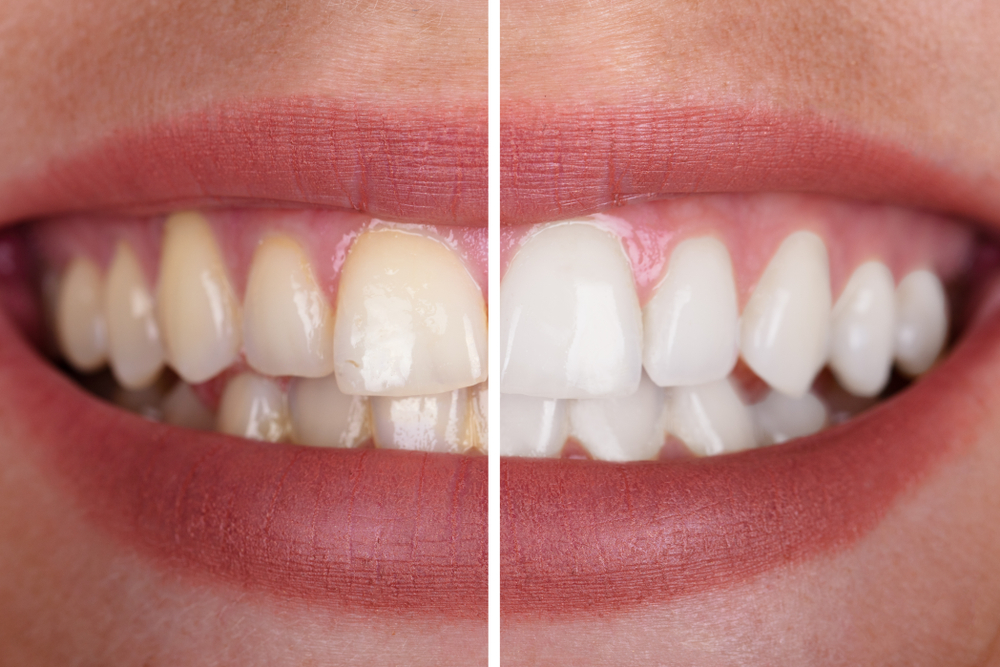Do you have a severely damaged or decayed tooth? Are you in a lot of pain because of it? A root canal from your dentist can help save the tooth. It can also alleviate the mouth pain from the damaged area.
Our doctors at Parkcrest Dental Group have an average of 25 years of experience each, and we’re happy to help in any way we can. Keep reading to learn more about root canal treatment, what happens during it, and how it helps you.
What Is a Root Canal?
A root canal saves a severely damaged or decayed tooth. The goal is to allow our patients to keep their natural teeth. When possible, this option is better than needing an extraction and artificial tooth.
Your natural teeth are the best way to preserve your bite and have the best results for chewing and talking. A root canal preserves the structure of the tooth, preventing adjacent teeth from shifting and maintaining proper chewing function. Dentists have been performing root canals for more than 100 years, proving it’s a treatment that gets good results.
How Will My Dentist Determine If I Need a Root Canal?
A dentist will examine your mouth, assess the damaged tooth, and determine whether enough of the natural tooth remains to properly clean and restore it.
When a tooth’s nerve tissue, also called the pulp, becomes infected or inflamed due to deep decay, cracks, or repeated dental procedures, the pain can become unbearable. A root canal removes the infected pulp, cleans the tooth’s interior, and seals it to prevent further damage.
Is a Root Canal Painful?
A root canal is virtually painless. The local anesthetic that numbs the area, advancements in modern dentistry, and your doctor’s expertise ensure less pain. You may experience some mild discomfort before the procedure and after the local anesthetic wears off.
Many people fear this treatment due to outdated misconceptions. Our staff will go above and beyond to make you feel comfortable and alleviate any fears you may have.
Common Myths About Root Canals
You may have heard some things from family members or read stories online about root canals. In general, you have nothing to worry about when it comes to this dental treatment. Our team will do everything possible to make your treatment as smooth as possible.
Myth 1: Root Canals Are Painful
Your grandma, uncle, or parent may have had a bad experience with a root canal in the past. But that is simply not the case with current dentistry.
Modern anesthetics and techniques ensure that root canals feel no worse than mild discomfort. Many patients report feeling relief from their tooth pain after the procedure rather than experiencing additional discomfort. We will make sure you get the right aftercare instructions so your tooth has a chance to heal and shine.
Myth 2: Tooth Extraction Is a Better Option
The best way to preserve your smile and your bite is to keep your natural teeth in place. Keeping a natural tooth whenever possible prevents misalignment, bone loss, and the need for implants or bridges. Root canals offer a long-term solution without disrupting the natural structure of the mouth. And our expert doctors can help you keep your natural teeth.
Myth 3: Root Canals Require Multiple Visits
Thanks to digital X-rays, modern tools, and our experienced staff, many root canal treatments are done in just a few visits. Many cases are done in one or two appointments. However, more complex cases might take more.
How to Avoid a Root Canal
Preventing tooth decay is the best way to prevent the need for a root canal. Good oral hygiene habits and regular dental checkups reduce the risk of deep cavities and mouth pain. We’ll help your teeth stay in great shape.
- Brush twice daily with fluoride toothpaste to remove plaque and bacteria.
- Floss daily to prevent food debris and plaque buildup between teeth.
- Limit sugary foods and drinks that contribute to tooth decay.
- Wear a mouthguard if you grind your teeth or play contact sports.
- Visit the dentist regularly (every six months) for checkups and professional cleanings.
Catching cavities early allows dentists to treat them with fillings rather than root canals. This also prevents other extensive procedures and possible tooth pain.
What Happens If I Avoid a Root Canal?
Delaying or avoiding a necessary root canal might cause more pain, tooth loss, and other complications. An untreated infection inside the tooth generally does not heal on its own.
You may experience these complications:
- Severe toothache and abscess formation
- Bone loss in the jaw
- Facial swelling and sinus complications
- Systemic infections affecting overall health
How to Know If I Need a Root Canal
Look for these signs that you might need a root canal from the dentist:
Persistent tooth pain
Discomfort that lingers, especially when eating or drinking hot or cold foods.
Sensitivity to temperature changes
A tooth that remains painful long after consuming something hot or cold.
Swollen or tender gums
Inflammation around a specific tooth, sometimes accompanied by a small bump known as a dental abscess.
Darkening or discoloration of the tooth
Internal decay can cause a tooth to appear gray or brown.
Pain when biting or chewing
Pressure on the tooth that causes discomfort may signal an infection.
How Long Does a Root Canal Take?
The actual appointment takes anywhere from 30 to 90 minutes.
How Long Does a Root Canal Last?
When properly cared for, it can last a lifetime.
What Should You Expect During a Root Canal?
Your root canal appointment goes through a few key steps. Our team will guide you through every part of this treatment.
1. Diagnosis
Before performing the treatment, your Parkcrest dentist conducts a thorough examination. X-rays help assess the severity of the infection and determine the shape of the root canal.
2. Preparation
We’ll prepare your mouth for the root canal. Your doctor will numb the area with a local anesthetic to make you comfortable.
3. Accessing the Inside of the Damaged Tooth
Your Parkcrest dentist drills a tiny hole in the tooth’s surface, allowing them to access the infected pulp on the inside. This is often the part that most people are afraid of. However, it is relatively simple for your doctor to reach the inside of the tooth.
4. Cleaning and Shaping the Canals
Your dentist carefully removes the damaged nerve and pulp tissue using specialized tools called canal files. The files also shape the interior parts of the tooth, preparing them to be filled and sealed.
The doctor flushes out any remaining bacteria with a disinfectant solution. Your new dental crown will stay clean underneath.
A small post is placed inside to strengthen the canals before sealing and filling the tooth. That way, the treatment lasts for a very long time.
5. Filling and Sealing the Tooth
Next, your dentist fills in the tooth with a biocompatible material. It’s a rubber-like substance that seals the canals of your inner teeth and prevents reinfection. Tooth canals are narrow passages that run from the top of your tooth down to the tip of the root. Your doctor uses a temporary filling to cover the access hole they created earlier.
6. Restoration and Protection
Your tooth will likely require a dental crown after a root canal. This is because the root canal treatment removes the nerve and blood supply, making the tooth more fragile over time. A dental crown restores strength, function, and appearance while restoring long-term durability.
What Can I Expect After a Root Canal?
Your care team at Parkcrest Dental will direct you through the steps to care for your mouth after a root canal.
Immediate Recovery and Pain Management
The anesthetic typically wears off 2 to 4 hours after the procedure is completed. Afterward, mild discomfort or sensitivity may occur. You might experience this when chewing. The sensitivity stems from inflammation in the surrounding areas rather than from the tooth itself. This is because the treated tooth is now completely clean. Your dentist will recommend over-the-counter pain relievers, such as ibuprofen or acetaminophen, to manage any soreness.
If pain persists beyond a few days or worsens, contact your dentist. They will take a look to see what’s happening.
Swelling and minor discomfort should subside within a week. If unusual symptoms, such as severe swelling or a recurring abscess, develop, a dentist should be consulted immediately.
Eat Soft Foods for a Few Days
We recommend avoiding hard and sticky foods for a few days after a root canal. This gives the tooth time to heal.
In the meantime, enjoy your favorite soft foods such as:
- Soup
- Yogurt
- Mashed Potatoes
- Pasta
- Smoothies
- Ground meats (beef, chicken, turkey)
Try to avoid overly hot or overly cold foods, like ice cream or coffee. When enjoying soup, make it warm rather than hot. This is to avoid any sensitivity associated with the root canal.
Long-Term Care for Your Mouth After a Root Canal
Taking care of the treated tooth and surrounding gums ensures a smooth recovery. It also improves the long-term durability of your restored tooth. Maintain excellent oral hygiene with regular brushing and flossing. Schedule a follow-up appointment with your dentist so they can monitor your teeth.
What Are Some Alternatives to Root Canal Therapy?
Our dentists prioritize saving natural teeth whenever possible, as they function better than artificial replacements in most cases. When a root canal is not viable, other treatment options may be a possibility for adults:
- Tooth extraction if the dentist cannot save the tooth
- Dental crown if the tooth is weakened but not painful
- Filling to prevent tooth decay from spreading
Root Canal Treatment at a Dentist in Springfield, MO
Root canal therapy remains one of the most effective ways to treat severe tooth infections and prevent tooth loss. This common procedure is nearly painless and has high success rates for our patients.
Please call (417) 887-1220 or fill out our contact form to make an appointment.




